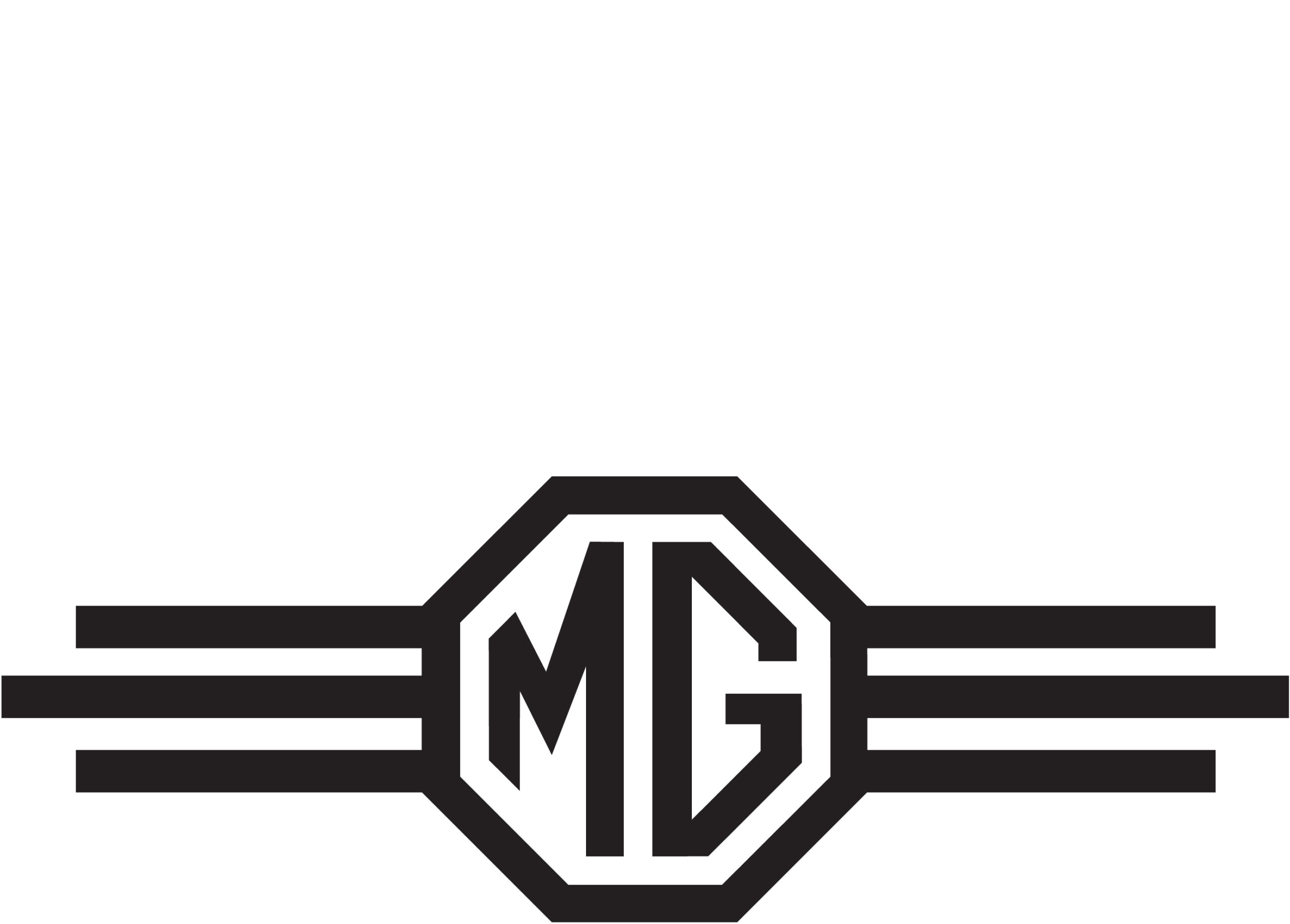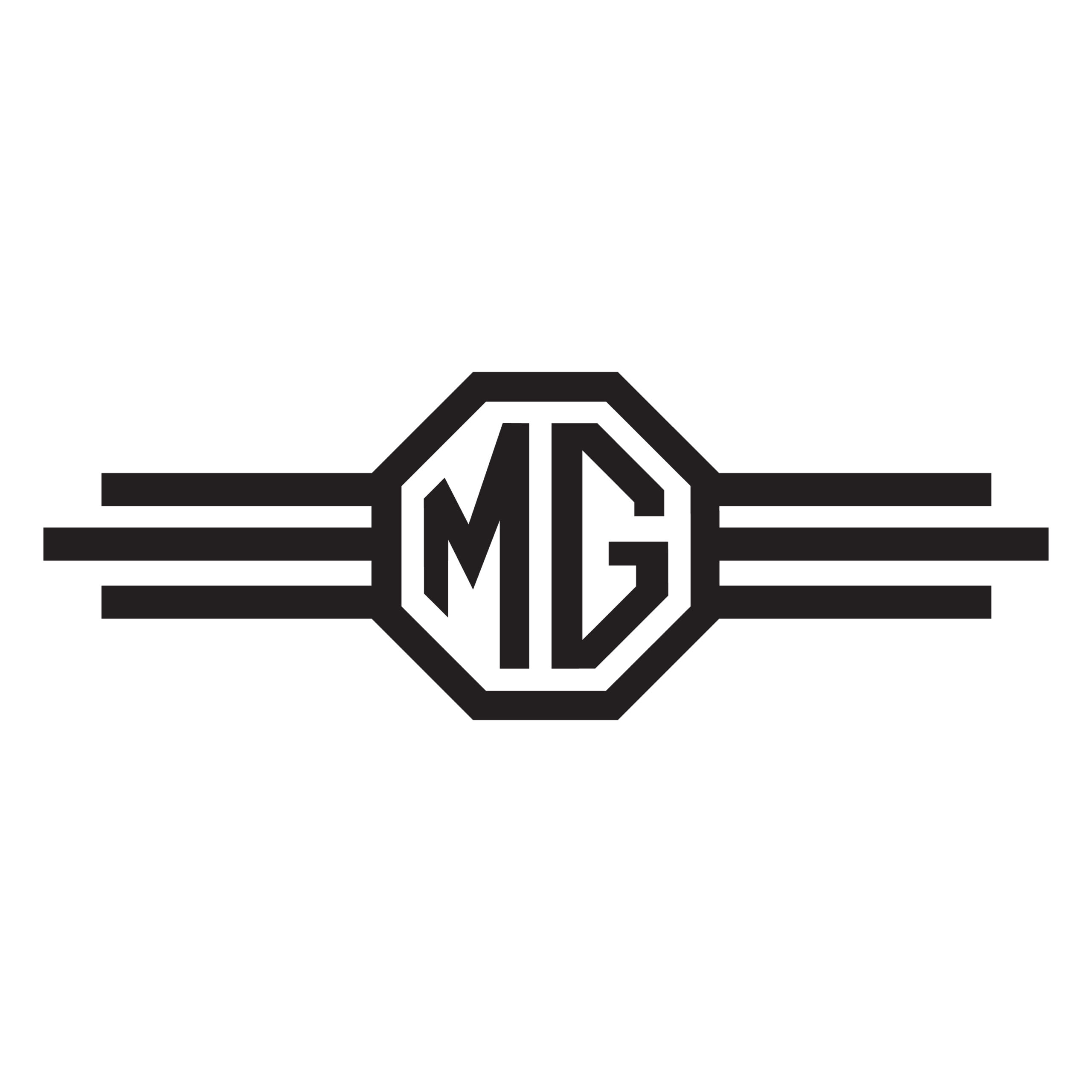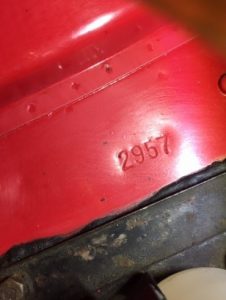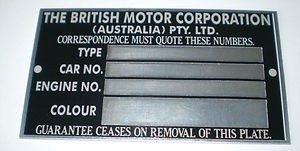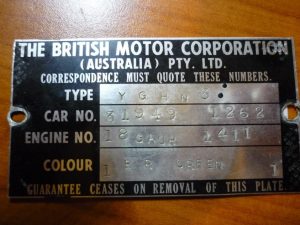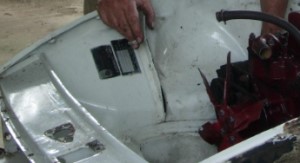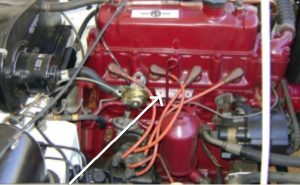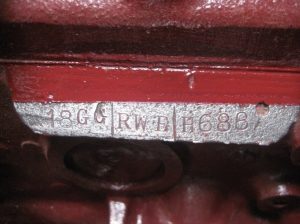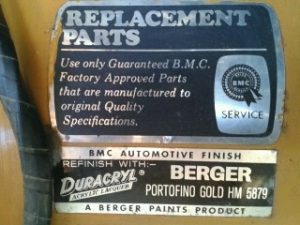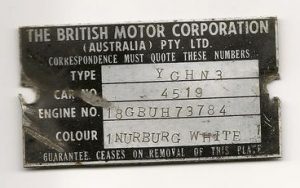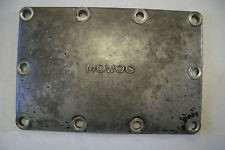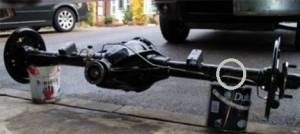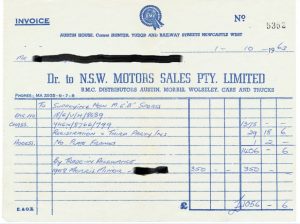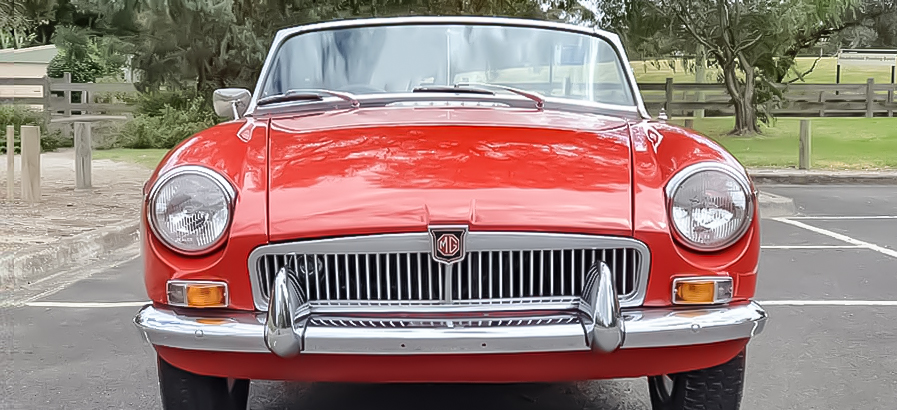
MGBS MADE IN AUSTRALIA – HOW TO ID YOUR MGB
HOW TO ID YOUR ‘AUSTRALIAN’ MGB
‘Caveat Emptor’ – let the buyer beware!
There are a variety of methods to assist in identifying the provenance of an MGB; each one of them is flawed! Let me explain.
For the past five years I have attempted to assist many owners and prospective owners in identifying the origins of their vehicles. There is no one method that I could say was conclusive!
After 50 years, a number of owners, modifications, lack of documentation, imported vehicles, the fact that original records were disposed of by Leyland and the somewhat quirky Australian numbering system (to mention but a few), it becomes harder to be certain as to the pedigree of a particular vehicle. Having said that, we will look at six methods that will give you the best possible assurance of the car’s pedigree
- Serial Numbers
- Original invoice
- Registration papers
- Heritage certificate
- Other places to search
- Instant VIN Decoder (NEW!)
- Serial numbers
All vehicles assembled in Australia had a variety of serial numbers on the vehicle (body, engine, gearbox and other major components). Whilst these could have been changed over the course of time, they are the best (in my opinion) method of identifying a vehicle’s provenance.
All vehicles (I have yet to come across one that doesn’t) have a body number stamped into the body itself. This is usually located on the passenger side of the bulkhead, next to the heater location. Many paint coats can often make this hard to see, but a bit of scratching around should reveal it (see photo).
This location is probably the best place for these characters, as a car that would need to replace the bulkhead would almost certainly be a write-off.
Note: The procedure used, if an incorrect number was punched was to fill it with Epoxy and start again. This was changed in June, 1970 when government regulations insisted on crossing out the old number and stamping a new number below.
The next location to look for identification characters is on the ‘ID plate’ or ‘Compliance plate’. There were a variety of plates used (see photos) and a period (second half of 1969) where no identification plates were used at all. In this case you would need to default to the bulkhead.
For those not aware, let’s break down what all those numbers and letters can tell us:
Explanation of the symbols
Car Serial Number
Let’s take a typical serial number – YGHN3 1628
Y – this is an Australian CKD (completely knocked down) vehicle
G – this is an MG
H – this vehicle contains a ‘B’ series engine
N – this vehicle is a two-door tourer
3 – this vehicle is the 3rd series
1628 – this is the vehicle’s serial number.
Codes:
YGHN3 = MGB Mk I (not to be confused with the MGA 1600 Mk II!)
YGHN4 = MGB Mk II O/D. These were made between August and November, 1968. It is suggested that 257 of these were produced
YGHN5 & YHN5 = MGB Mk II O/D. From January 1969. Some later in the run were stamped ‘YHN5’, with the ‘G’ omitted for reasons stated elsewhere on this site.
YGHN6 & YHN6 = MGB Mk II Non-overdrive cars. (Only about 360 in total).
YGHN7 & YHN7 = MGB Mk II Automatic transmission
YHN9 = MGB facelift (colloquially termed ‘MGBL’ in Australia)
YHN10 = MGB facelift (‘MGBL’) Automatic transmission
All Mk I and early Mk II vehicles were fitted with an identification plate as shown below.
Plate found on all but first few BMC MGBs
Note: some of the earlier Mk 1s had the following ID plate:
Inexplicably, this plate was found on the first few MGBs assembled in Australia
The first approx. 975 Mk I cars had the combined UK/Australian chassis and body numbers on the ID plates (UK chassis number first, followed by the Australian body number)
Early ‘Enfield’ plate. Note: additional numbers are UK chassis numbers and stamped from the front
‘Zetland’ plate. Note: stamped from the rear
Note: All cars assembled at PMC, Enfield had their ID plates hand-stamped from the front (rather untidily). All Zetland plant-assembled cars had their ID plates machine-stamped from the rear.
The early style plate was located in the engine bay towards the top of the RH front guard valance, forward of the radiator shroud.
These identification plates were deleted from vehicles produced from approximately mid-’69 until Jan ’70. (see SLS 169) For this period, as with all other times, the serial number was stamped onto the LH side of the bulkhead shelf in the engine compartment. In addition, for paint identification, a pressure-sensitive label detailing the paint was placed in the position previously occupied by the ID plate. These changes occurred from cars: YGHN5/1428 (manual with overdrive), YGHN6/621 (manual) and YGHN7/537 (automatic)
Engine number
The engine number is stamped directly onto the RH side of the cylinder block just below the cylinder head joint-face. (this was an Australian practice, as opposed to the riveted plate elsewhere in the world). Where identification plates or compliance plates are fitted, the engine number is included in addition to being stamped on the block.
Engines used in Australian assembly:
18G/U/H * 18GA/U/H * 18GB/U/H * 18GB/RU/H * 18GD/WE/H * 18GD/RWE/H * 18GD/RC/H * 18GG/WE/H * 18GG/RWE/H * 18GG/RC/H * 18V582/H
Explanation of the symbols
18 this signifies that the engine is 1800 cc.
G (first listed) this signifies that it’s for an MG. (the first series didn’t have a ‘series’ identifier)
A,B,D,G this is the ‘Series’ identification.
U this signifies ‘Centre gear change’
H this signifies ‘high compression’.
R this signifies ‘overdrive’.
WE this signifies ‘Centre gear change + All speed synchromesh’.
C this signifies ‘automatic transmission’.
V = Vertical (north south)
582 = Manual + Overdrive, Full Synchromesh, Centre Floor Shift.
1573 this is the engine number.
Compliance Plate
Commencing 1970 production, in addition to the stamped number, Vehicle Compliance Plates were fitted. The serial number, date of manufacture, seating capacity and the numbers of the Australian Design Rules incorporated in the vehicle, are shown on this plate which is fixed to the oil cooler support panel in front of the radiator, as well as a ‘colour’ label on the front RH valance.
There were two styles of these plates; the earlier square style, followed by the rectangular one.
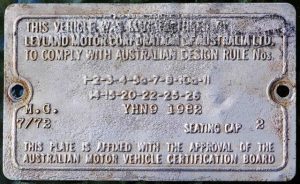
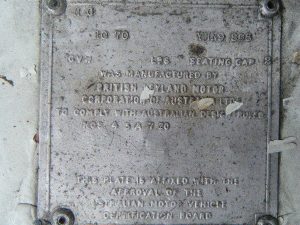
NB for an explanation of the above numbers, see ‘ADR’ in index.
NB Date of Manufacture is date compliance plate is attached – date ready for sale.
Paint codes
The identification plates fitted to the Mk I and early Mk II vehicles included details of paint finish. From mid ’69, when these plates were deleted, the paint details were indicated on a label located on the inside of the RH guard valance. Be aware (1) that many of the paints were unique to Australian vehicles and (2) the stickers on many of the later cars with compliance plates have been removed.
The later style sticker detailing the paint used.
The numbers before and after the paint colour name (on the old ID plates) can be quite confusing. Using the ID plate below you can see that it is 1/ NURBURG WHITE /1
ID plate, showing numbers before and after ‘Colour’.
first numeral – Type of paint (1 = enamel, 2 = lacquer, 4 = acrylic enamel)
second numeral – Manufacturer (1 = Balm Paints, 2 = Lusteroid, 3 = Berger, 4 = Brolite, 5 = Taubmans, 6 = Spartan)
Therefore, the car above was painted using enamel paint, in the colour of NURBURG WHITE, supplied by Balm Paints
Gearbox Number
The gearbox number is stamped on the top of the gearbox casing adjacent to the dipstick.
Automatic Transmission Number
The transmission serial number is stamped onto a plate attached to the side of the transmission.
Overdrive Number
This is stamped on the solenoid side cover on the RH side of the unit.
Rear Axle Number
The rear axle number is stamped on the front of the axle tube on the LH side adjacent to the spring seat. Circle is highlighting rear axle number:
- Original Invoice
“Oh, to have one of these!” If you are fortunate enough to have, or have the opportunity to acquire such a record, most of your questions about the provenance of a vehicle should be answered. Unfortunately, a) hen’s teeth are easier to find and b) I am aware of at least one invoice where the incorrect engine number was written down.
Original 1963 invoice (love the price!)
- Original Registration Papers
In some states, it is possible to have an archival search done for a small charge. (In the registry on www.mgbsmadeinaustralia.org the Victorian vehicle’s details were taken from original Registration Branch records).
- Heritage Certificates
UK and US produced MGB’s production details are able to be verified by obtaining a Heritage certificate from British Motor Industry Heritage Trust. Unfortunately, this is not available for Australian-assembled vehicles, as no records exist in the UK for CKD vehicles exported and as we know, Australian records were destroyed.
Unfortunately (and possibly inexplicably), all CKD kits sent to Australia were not recorded by BMC. Therefore it would be a waste of money to seek production verification from this source. Some people have been given ‘approximations’ by referring to engine numbers etc. but this can never be conclusive.
- Other places to search
Beware, the information that follows can only be AN APPROXIMATION and should not be used to reach conclusions about production dates.
Windscreen wiper motors have a date stamped on them. It can be a reasonable assumption that if you add AT LEAST six weeks for shipping, you can be reasonably sure that a vehicle was not assembled before that date (provided it is the original wiper motor!). Be aware though that these items were all placed in a bin and it is not impossible that a particular part kept falling to the bottom of the bin, thereby minimizing its usefulness as an indicator. Many other items, such as starter motors, alternators, etc. also show dates of manufacture that can assist in placing a vehicle in its historical position (again, above provisos apply).
- Instant VIN Decoder (NEW!)
Ian Cass has very generously provided a quick VIN decoder of MGBs. All you need to do is type in your VIN (as shown on your ID plate) into the below box, and once you press ‘SUBMIT’, a brief description of the vehicle that VIN relates to will be shown.
A couple of provisos:
- This decoder applies to ALL MGBs manufactured throughout the period 1962 – 1980
- In the case of the Australian-assembled MGBs, the results will be a highly accurate, close approximation (this is due to the absence of any recorded official documentation). Neither myself or Ian Cass can guarantee the accuracy of this information, and as such, any information sourced from the VIN decoder should be used as a guide rather than gospel.
- This VIN decoder is a stand-alone application, and therefore the records you type in are not revealed to the MGB Made in Australia website.
REQUESTS:
- Because Ian is constantly refining his much-appreciated work, please let me know if you should come across any anomalies, and I will pass them on to Ian, so we can help improve the results of the VIN decoder.
- It would be much appreciated, if you found this helpful, to provide this website with your car’s details. This information will go towards getting as much information recorded about the Australian assembly situation.
- If you are interested in Ian Cass’s own journeys with his MGB they can be seen at his website: https://rlw7w.uk/
So, what do you do with all this information?
As mentioned in the beginning, Leyland, in all their wisdom, disposed of all production records. Some visionary staff, realising their historical importance, managed to retrieve some of these important records. However, the records are incomplete; original Zetland staff are getting older and with the passing of time, a lot of this information has been lost. We can only attempt to fill in as many gaps as possible to give owners/enthusiasts as close an approximation to the position where a specific car fitted into the production line, hence the registry on this website.
Oops…the below YGHN3 car was incorrectly stamped YGHN7!
Import/Imported MGBs
Do I buy an Australian-assembled MGB or an imported one, or do I simply look into importing one myself?
The following advisory covers necessary precautions to be taken when considering any of the three above-mentioned options.
The following advisory is written and submitted by Mark Paget. Thanks Mark.
Advisory – Identification
A hinderance to obtaining the correct part first time is incorrect vehicle identification. We frequently encounter speculation, fantasy and outright untruths from owners and some repairers in the area of vehicle identification.
Your MGB, MGA, Sprite or Midget will typically fit into one of three areas:
– British made for the home market,
– British made for Export, and
– Australian manufactured.
For a British made car a Heritage Certificate can be a wise investment. If a record of your car survives, it could provide a myriad of information including the selling dealer, date of manufacture, colour, intended market, engine number, date of delivery…
Information you can provide by looking at your car or the vehicle’s original documents.
Basics
- Manufacturer: Don’t Guess
For a A, B, C or Midget, this can NOT be “MG” in anyway shape or form!
- Destined market: Don’t guess
- Model: Don’t guess
- Year: Don’t guess
- Colour/s: Don’t guess
- Car/body number: Don’t guess
- Engine prefix and serial number: Don’t guess
- Things that have been changed from standard: Don’t guess
five speed gearbox with no markings on gear knob to tell anyone where reverse is, secret unmarked horn switch because the steering wheel was played with…
An Australian manufactured car will either have:
– an Australian body plate,
– a short period in 1969 without any plate (listed in the relevant MG-B shop manual)
– a Compliance Plate from 01 January 1970 onwards.
Note: A Compliance Plate is a Federal Government item, once affixed it is not to be defaced or removed. Its presence is a mandatory feature on all relevant vehicles.
So to the vehicle’s car or body number HAS to be clearly visible and STAMPED into the vehicle’s main structure. Missing, hidden under layers of paint or owner nonsense excuses are not acceptable substitutes. The vehicle’s car or body number HAS to be clearly visible and STAMPED into the vehicle’s main structure!
A certificate from the Leyland Australia Heritage Group won’t provide any factory production data. However it will help clarify your local vehicle’s original details.
At a secondary level, owners tend to only apply superficial effort to identifying a given vehicle. Not making sure what’s in front of them actually matches what it’s supposed to be.
Imports
A vehicle imported privately (by the registered owner in that country) or commercially imported (a used vehicle imported for the purpose of on-selling).
A used vehicle, legally imported for road use within Australia in the past thirty plus years will have a; yellow, green or purple Compliance Plate or more recently, a Vehicle Standards plate or non-defaceable decal. In recent years Queensland has allowed otherwise improperly imported vehicles to acquire a Modification Plate for the code LO1.
For any of these three means of compliance, the vehicle should have undergone a thorough assessment, followed by a variety of changes to meet local requirements. Depending on the precise model and importation type this could include; body number stamped into body, engine number stamped into engine, speedometer in KPH, KPH as the dominant reading on the speedometer, six digit odometer, seat belts for all seat positions, child restraints, repositioned front registration plate, right hand drive, hand brake warning light, all factory fitted features present and working such as dash light control…
Note: For the three types of import just listed (especially those with Modification Plates) – we frequently encounter vehicles that fail to meet the most basic of mandatory requirements (incorrect or false vehicle details, missing safety and emissions equipment, speedometer not in KPH, DIY seat belts and anchorages, rear number plate panel not wide enough, substandard welding, steering shaft rubbing against body…). Plus the occasional two different car halves welded together, amongst other notable encounters.
Yesterday’s substandard approval doesn’t mandate tomorrow’s successful inspection. Caveat emptor!
Imports have been a small but steady presence throughout. However in the late 1980s through 1990s, Australia was saturated with used, North American specification MG-Bs and others. The vast majority were ‘end of life cars’ in their home market. Almost the entirety would fall under the commercial import classification. The majority were imported and many registered, without meeting the requisite compliance standards. They are still present and frequently encountered today. With the owner and often buyer as well, pleading ignorance, innocence and demanding there be no consequences. A significant number also pretend to be Australian produced.
Although no collated data is available, I would suggest the local MG-B market is presently:
- 45% North American,
- 45% Australian, and
- 10% other.
With the average owner or buyer only able to chant MG, MG…
Australian manufactured MG-Bs have distinct and obvious features. Some are common with concurrent international production, some are not. However the open-minded individual could readily use these points to help identify the car in front of them. The following has nothing to do with stereotypical owner/buyer fascination points. The virtually useless, superficial data the uniformed fixate on.
- All Australian produced MG-Bs have an ambidextrous body. The monocoque could accept either steering and vehicle controls by means of nut and bolt additions. All the holes and captive nuts are present, before painting. Whereas North America and some other markets received structurally left-hand drive only bodies, from the late 1960s onwards. All such points are still obvious on an assembled car.
- No Australian B has a collapsible steering column.
- Any Australian B fitted with the optional steering lock, requires the operator to reach under the dash. None have the lock between the steering wheel and gauges.
- All Australian produced MG-Bs have:
- only two wiper arms,
- wire spoke wheels,
- carriers for two six-volt batteries,
- a pressed steel dash panel (gauge and glove box facia),
- a speedometer in miles per hour,
- a manual cold start device (choke),
- manual steering,
- a hydraulic stop light switch,
- non assisted brakes,
- a dash light rheostat,
- an oil cooler,
- a belt driven cooling fan (without any overheating issues or need for modification),
- a body that accepts chrome bumpers,
- a liberal application of seam sealant applied before the body colour, plus textured under seal applied before the body colour.
- All Australian produced MG-Bs are roadsters/convertibles.
- All Australian produced MG-Bs have factory provision for safety belts. This will be
either:
- pre 1967 three anchor points per seating position, or
- post 1966 three anchor points per seating position system.
- All Australian produced MG-B have a belt anchorage (either design as above) in the wheel arch. NONE have a shoulder anchorage outside of the cabin’s perimeter. A shoulder height captive nut that would be accessed from the top of the panel (where the rear of the soft top would clip in place). This arrangement was never fitted to local production. Never fitted and filled… or any other owner wishful speculation.
So if you open the bonnet and a factory mechanical stop light switch is fitted… But again making the point of popular buyer fixation points versus reality items. Some of the above may have been played with. As with owner fixes for cooling system ‘symptoms’ instead of addressing acquired overheating faults.
There are NO Australian manufactured GT. The handful that were locally delivered are complianced two seat.
The above isn’t a definitive answer to identification. But it is a far more accurate starting point than what is usually proffered. Particularly in the home market, these points would greatly narrow the field and eliminate pretenders. Plus, instilling a logical thought process. As is common these days, the new buyer (regardless of age demographic) with their total lack of pre-purchase research, is befuddled by and subsequently moans about:
- miles per hour,
- non-assisted brakes,
- manual steering,
- cold start procedure,
- warm-up,
- non-retracting seat belts,
- daily and weekly driver checks,
- why fuel goes off,
- why adding fresh to stale petrol isn’t a fix…
As the great sage Benny Hill professed, ‘when you assume, you make an ass out of you and me’. Copyright Mark Paget 2021.
